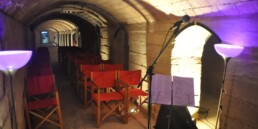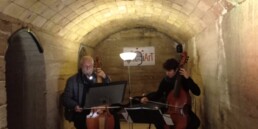

A conceptual and terminological perspective, in order to familiarize our public with the naturalness of the migratory fact and the global vision of this concept.
The content closes the objective and approaches the most representative aspects of immigration in 20th century Catalonia from the causes and also consequences in our territory.
in the 21st century we look at migrations from a very current perspective, from our most immediate present and future (Espai Migrar)

The Placeta Macià air-raid shelter (RapM) opened its doors as a Site of Memory in January 2008. Since then and until today it has remained free of charge for both individual and guided visits, guaranteeing that anyone can receive the visit under equal conditions, given the inclusive and adapted nature of the resource.

In 2013, the City Council’s culture department decided to promote a cultural project, the RefugiArT, to be added to the Shelter’s memorial offer: this involves holding several sessions a year where the public is offered performing arts, such as theatre, music, dance, poetry, storytelling and magic, at the reduced price of 5 euros. These are held every first Friday of the month (except key events such as theatre festivals or similar, or the coincidence with festivals), excluding July, August and September, to guarantee the comfort of the audience.







